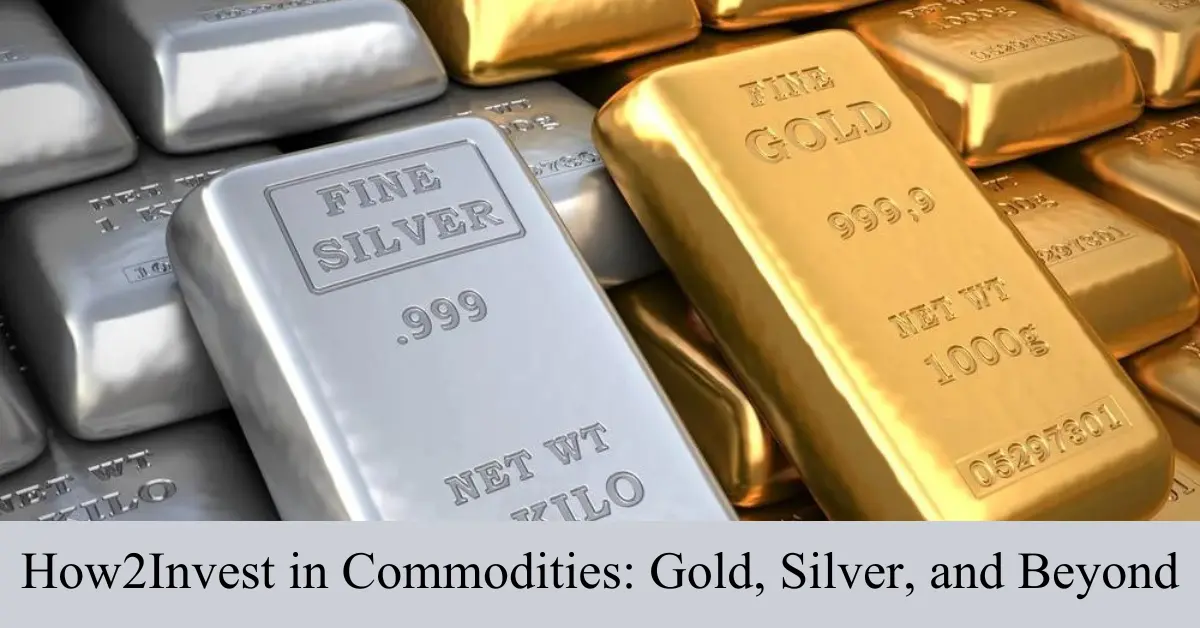
How2Invest in Commodities: Gold, Silver, and Beyond
Introduction
Welcome to the world of commodities investing! If how2invest you’re looking to diversify your investment portfolio and explore new opportunities, commodities might just be the perfect fit for you. From shiny gold to versatile silver and a plethora of other resources, commodities offer investors a unique way to participate in the global economy. But diving into this market can seem daunting at first. Fear not! In this guide, we’ll walk you through the basics of commodities investing, focusing on popular options like gold, silver, and beyond. By the end, you’ll have a solid understanding of how to get started on your commodities investment journey.
What Is How2Invest in Commodities: Gold, Silver, and Beyond
Investing in commodities means buying and selling raw materials or primary agricultural products. These can include precious metals like gold and silver, industrial metals such as copper and aluminum, energy resources like crude oil and natural gas, as well as agricultural products like corn, wheat, and soybeans. The goal of investing in commodities is to profit from changes in their prices. Unlike stocks or bonds, commodities are tangible goods traded on global markets. Investors can gain exposure to commodities through various methods, including owning physical assets, trading futures and options contracts, investing in exchange-traded funds (ETFs), or buying stocks of companies involved in commodity production. Whether you’re interested in the allure of gold and silver or the dynamics of other commodities, understanding how to invest in these assets can open up exciting opportunities in the world of finance.
Why Investing in Commodities is Important
Investing in commodities holds significant importance for several reasons. Here’s why:
Diversification of Portfolio: Adding commodities to your investment portfolio can help spread risk and reduce overall volatility, especially during economic downturns or market uncertainties. Commodities often have low correlation with traditional asset classes like stocks and bonds, providing a hedge against inflation and currency fluctuations.
Protection Against Inflation: Commodities, particularly precious metals like gold and silver, have historically served as a store of value during times of inflation. When the purchasing power of fiat currency declines, the value of tangible assets like commodities tends to rise, offering investors a way to preserve wealth.
Potential for High Returns: Commodities markets can experience significant price fluctuations driven by supply and demand dynamics, geopolitical events, and macroeconomic factors. This volatility presents opportunities for investors to capitalize on price movements and generate attractive returns, especially for those with a high tolerance for risk.
Hedging Against Geopolitical Risks: Investing in commodities can provide a hedge against geopolitical risks and geopolitical tensions that may disrupt traditional financial markets. For example, energy commodities like crude oil and natural gas are sensitive to geopolitical events in oil-producing regions, making them attractive assets during periods of geopolitical uncertainty.
Exposure to Global Growth Trends: Commodities are essential raw materials used in various industries, making them closely linked to global economic growth trends. Investing in commodities allows investors to participate in the development and expansion of emerging markets, as well as technological advancements driving demand for certain resources.
Portfolio Optimization: Including commodities in a diversified investment portfolio can improve its risk-return profile and optimize overall performance. By incorporating assets with different return drivers and risk characteristics, investors can achieve a more balanced and resilient portfolio capable of weathering different market conditions.
What are commodities?
Commodities are raw materials or primary agricultural products that are traded on global markets. They include metals like gold and silver, energy resources like crude oil and natural gas, agricultural products like corn and wheat, and other goods like livestock.
Why should I invest in commodities?
Investing in commodities can help diversify your portfolio, protect against inflation, offer potential for high returns, hedge against geopolitical risks, provide exposure to global growth trends, and optimize portfolio performance.
How do I invest in commodities?
There are several ways to invest in commodities, including owning physical assets, trading futures and options contracts, investing in exchange-traded funds (ETFs), or buying stocks of companies involved in commodity production.
Are commodities risky investments?
Yes, investing in commodities can be risky due to price volatility, geopolitical factors, supply and demand dynamics, and other market forces. It’s important to conduct thorough research and understand the risks involved before investing.
Which commodities should I invest in?
The choice of commodities depends on your investment goals, risk tolerance, and market conditions. Precious metals like gold and silver are popular choices for diversification and inflation hedging, while energy commodities like crude oil and natural gas are influenced by geopolitical factors and global demand.
Can I lose money investing in commodities?
Yes, like any investment, there is a risk of losing money when investing in commodities. Prices can fluctuate significantly, and factors such as supply disruptions, economic downturns, and regulatory changes can impact returns.
Are commodities affected by economic indicators?
Yes, commodities are influenced by various economic indicators such as GDP growth, inflation rates, interest rates, and consumer demand. Changes in these indicators can affect supply and demand dynamics, thereby influencing commodity prices.
How do I mitigate risks when investing in commodities?
Mitigating risks when investing in commodities involves diversifying your portfolio, conducting thorough research, staying informed about market trends, setting clear investment goals, and using risk management strategies such as stop-loss orders and hedging techniques.
Conclusion
Investing in commodities like gold, silver, and beyond offers unique opportunities for diversification, inflation protection, and potential returns. Whether you’re a seasoned investor or just starting out, understanding the basics of commodities investing can help you navigate this dynamic market with confidence. By incorporating commodities into your investment portfolio and employing sound risk management strategies, you can enhance your financial resilience and pursue your long-term financial goals. Stay informed, stay diversified, and happy investing!
